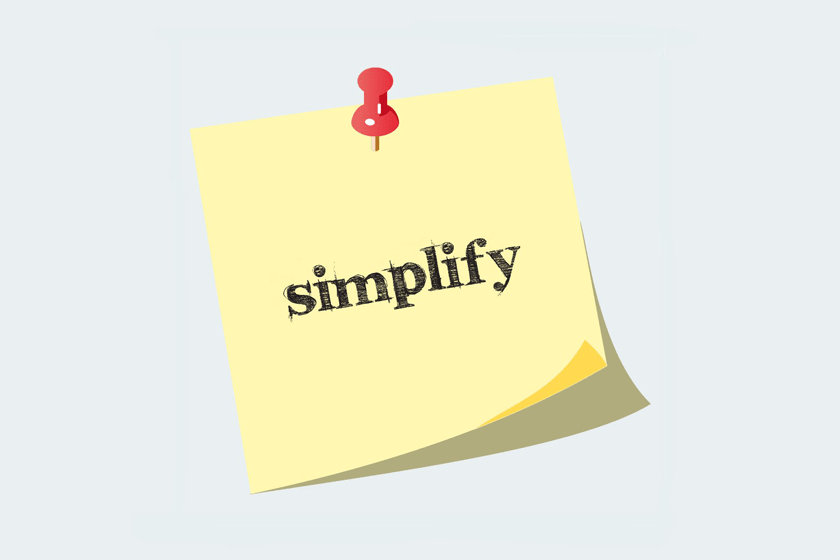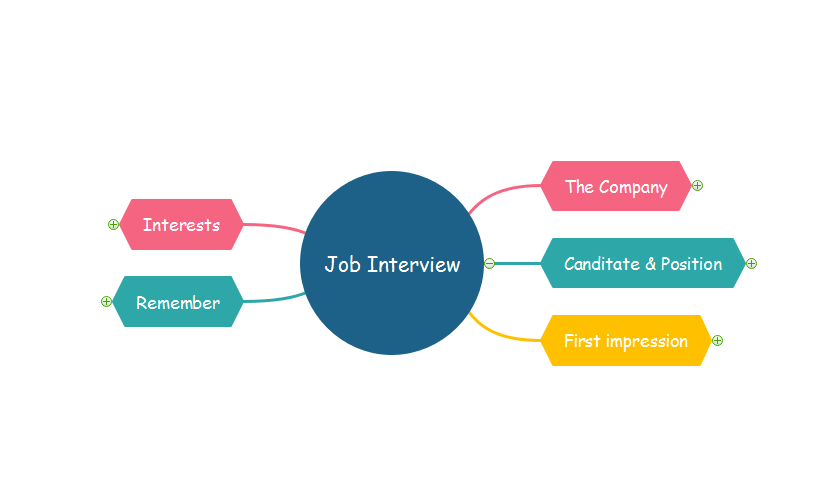This article is dedicated to all of you that live in the fast lane and lack time to stop and reflect along the way. There is a simple and underrated solution that can drastically improve the quality of time you spend on planning and ease the process of reaching your goals – and that is mind mapping.
As simple as it sounds, creating mind maps can impact your personal and professional performances, for which we created a list of 10 real-life uses you should definitely have in consideration.
1. Memorizing
The first thing that comes to mind when we mention memorizing new information is studying, but it would be a pity to relate mind maps only with education.
Many people struggle with memorizing and we all have different techniques that suit us best: some of us use visuals, others prefer an auditory input, the kinesthetic method is also popular among young learners, etc.
But let’s look at the facts:
“Research approximates that between 80-90% of the information received by the brain comes through the eyes.”
This is further elaborated in Hyerle’s chapter on Thinking Maps which offers a great overview of how learners create cognitive mind maps to boost learning and memorizing.
Still not impressed?
Approximately 65% of the population is visual learners. Just think of how much mind mapping can help you memorize and acquire new concepts by building on your previous knowledge.
This is especially the case in this digital age where we are being bombarded with visual input that makes it easier for us to recall the information even after long periods of time.
2. Organizing Ideas
This usage overlaps with the previous one to a certain point, but it still deserves separate attention as it has a wide practical implementation that cannot be deduced to the educational needs only. It has to do with how our brain functions.
It works by creating associative connections between concepts, and this makes it much easier to see the interconnectedness between ideas by presenting them in a non-linear fashion (which is in contrast with writing for example).
With this in mind, we can see that mind maps resemble the brain – they create meaningful chunks of information. By grouping information into bigger (and more abstract) categories, we understand them much better. It is the neuroscience of meaning and association.
Using mind maps to organize ideas is the key to unlock the brain’s potential because it truly is a mirror-like image of the brain.
The non-linear approach gives way to both the left and right hemispheres which, in return, gives way for the creative and analytical to merge into an innovative idea.
3. Brainstorming Sessions
It looks easy to organize an idea, but you will need a brainstorming session if you do not have one in the first place. Mind maps also come in handy for this because they unleash the creative inspiration that is more than welcomed during brainstorming sessions.
Brainstorming may look chaotic at times, but this ‘creative chaos’ is the place where new ideas are born and developed. There has been a lot of research in the field of brainstorming implications which suggests that the format we use to write down the suggested ideas can influence the quality of the session.
Mind mapping and brainstorming are the perfect matches for several reasons:
- Mind maps are dynamic and can follow up the fast-changing tempo of a brainstorming session;
- All potential interrelationships between certain ideas can be seen more vividly;
- Mind maps can hold the session under control, for brainstorming is open-ended and can easily go off-topic if the limits of discussion are not clear-cut.
So next time you are doing a brainstorming session, try using a mind mapping software like iMindQ and see whether it will turn out more successful than the previous ones.
4. Attractive Presentations
Now that you have a new idea from your brainstorming session and you are able to organize it properly and thoroughly, it is time to present it – and mind maps can also help you do that in a visually attractive and coherent way.
How will this affect the delivery and persuasiveness of the presentation?
A research paper has come to the conclusion that “presentations using visual aids were found to be 43% more persuasive than unaided presentations.” From this, we can see that the visual input is a vital support that will help you and your audience make and take the best out of the presentation.
Mind maps are excellent for presentations because they provide a well-organized flow that is easier to grasp. We have all witnessed knowledgeable presenters who want to share so much information that they end up switching topics and stretching complex ideas only on the surface.
To avoid being misunderstood, use mind maps on your next presentation. In this way, your presentation will look more professional, easy to follow, and you will keep your audience’s attention longer. Your map will probably be what they remember the most.
5. Simplify Complex Ideas
As Leonardo da Vinci has said: “Simplicity is the ultimate sophistication.”
You might be an expert in your field, but you should master the art of simplifying complex ideas so that you can transfer your knowledge, present an idea to your colleagues or upper management, or maybe just rehearse to see if you have mastered a certain topic.
To put it in Einstein’s words: “If you can’t explain it simply, you don’t understand it well enough.”
You will see exactly how much you understand a certain concept when you will try to create a mind map to explain it. This is especially the case with complex and abstract concepts that have multiple divisions and correlations.
By dividing the concept into smaller chunks, you will see in what areas you need further improvements, particularly if you apply the ‘translate-it-to-a-12-years-old-language’ rule.
Mind maps work on connecting keywords, so it will be easy to connect the dots and look at the big picture once you have written down all the necessary information. It is perfect for eliciting and representing knowledge among multidisciplinary teams as well.
6. Case Study
Yes, mind maps can also be implemented in case studies and different areas, from negotiating skills to rapid analysis of qualitative data. As you can see, the possibilities are endless!
A mind mapping strategy can help you build a successful case study in which you will not miss any detail during the examination.
One of the things you could use are mind map templates, or make up your own and recycle them for future projects.
Case studies should have a logical structure and a clear outline. In that way, they will distinctly show how your ideas are connected with the business and what will their implementation mean for the whole company. More importantly, you will get bonus points if they are personalized; so presenting them with a mind map in your own unique and customized way will build up confidence.
Writing a case study is a demanding and delicate process itself, so consider presenting it in the form of a mind map that will minimalistic and simplified.
7. Problem Solving
The correlation is more than obvious but still, let’s go through it once again. When it comes to mind maps, it is all about creating as many new branches that will help you see the relationships between different or seemingly unmatchable ideas.
For example, one research study “illustrates how non-hierarchical mind mapping techniques can guide novice designers in adopting the design problem-solving processes/framework of expert designers.” How?
Simple. When weighing down all the possible solutions you discover the what-ifs that may not have sprung to mind if we are just contemplating without taking any notes, or even just writing them as bullet-points. This technique lowers anxiety and stress which are our biggest enemies when we are in a problem-solving process. Thus, mind maps can help you remain calm and get full control over the problem.
Plus, you will have a clear bird perspective of the bigger image and maximize the potential of choosing the right solution.
Very often it is not about the complexity of the problem, but its formulation and approach.
8. Project Management
Project managers do not have time to lose and must use their time productively and strategically. Mind maps can come in handy as their multi-faceted nature has many applicable uses: scheduling, planning, meeting brainstorming sessions, team management, project scope – anything that will assure better performance and project outcome! It is all about organizing the chaos so that it does not look overwhelming and demotivating.
Try conducting team project planning or team decisions with your members in a collaborative mind map. You might be surprised to what extent can new ideas develop in unpredictable directions. Additionally, the project responsibilities and assignments will come in naturally: everyone will contribute with their expertise in the field and the task-division process will be organic.
Another possible scenario: use a mind map to schedule meetings and divide assignments. Once you have written down all the activities each team member has, only a glance at the min map will tell you whether the workload is divided properly.
It will also help you remember each member’s tasks for a longer period, and you can also use it to track their progress.
9. Sourcing
Mind maps can be highly beneficial to recruiters in several ways. Firstly, they can help in creating a strategy for a potential applicant. You can neatly organize all the information about a certain profile: level of education, type of job, assignments, and requirements, and so on. Thus you will have everything needed at a glance.
Secondly, you can present the tracking of your applicant in a mind map as well. Write down from which channels the portfolios came from. You can compare this with your colleagues and create a mutual mind map to see your weak and strong points and try to maximize the group’s potential.
Thirdly, you could track down the onboarding process which is very important but seldom improved. By mind mapping the stages that each new employee goes through, you can easily address the weak points and track down the process of their improvement.
You see, mind maps can be implemented almost everywhere.
10. Summarizing
Last but not least, it is perfect to summarize in a mind map. Books you have read, films you have seen, your weekly tasks – anything! You will remember the summary much longer than if you have written it down in the form of a paragraph because, as I mentioned earlier, our brain works by visualizing and organizing.
You can add sub-topics and then branch each one of them into further details until you have exhausted all possible further divisions.
The beauty of mind mapping is perfect for such a scientific approach that aims to classify and further divide until there is nothing more left to discover.
And since a picture is worth a thousand words, then it will perfectly fit the purpose of this article to present all 10 real-life uses of mind maps into a mind map!
About the author
Tea Duza, Literature enthusiast with an unfathomable interest in art in general. Believes that literature can change the world. Moto: ‘There’s not such thing as too many books – only not enough bookshelves.’ Bike and jazz lover who goes through life with a healthy doze of skepticism. Travelholic. You can connect with Tea on LinkedIn.














